|
Although I manage to do a fair bit of birding when in Spain, there remain some sites that have somehow remained on the backburner. I've been meaning to return here for a better look these past couple of years. Frankly, the site didn't inspire me first go round. Then the obvious route sprouted 'No Entry' signs and, although locals all ignored these, it did put me off a little. Several times the path around Laguna Salada was a sea of thick gluppy mud almost impossible to negotiate without wellies and I could never get a very clear view across the laguna. To be honest, I still haven't got to explore Laguna Chica. However, Laguna Juncosa was often full of birds albeit relatively common ones. A recent exploration online showed Ferruginous Duck had been seen there during winter 2013 which is promising. I also discovered that there are a couple of tracks leading across farmlands to the oddly named Laguna del Hato Carne. Whether or not these are drivable or open to the public remains to be seen. However, photos found online suggest that this winter this shallow hollow has been wet. Hopefully, it should be packed with birds when I'm out there again in April and can explore the place. A fifth laguna also came to light (leaving aside a tiny pool beside the track to Laguna del Hato Carne) during my searches - Laguna de San Bartolome. I'd passed by this laguna a few years ago think it was just a flooded field. This time I plan to get a closer my critical look!
0 Comments
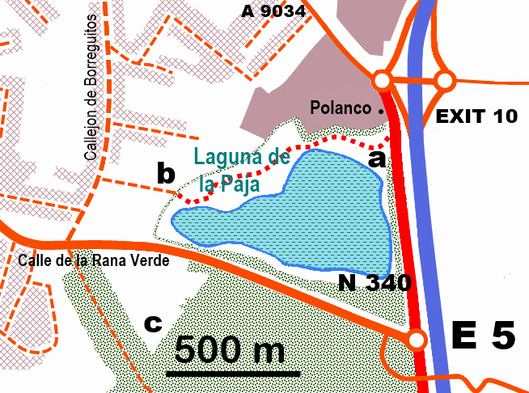 Laguna de la Paja - Chiclana If you're driving south on the E 5, or even the N 340, past Chiclana you could well miss the Laguna de la Paja since it often looks like no more than a grassy field which isn't ; surprising as the name means 'Lake of Straw'. However, when wet this shallow reedy 39ha laguna can harbour birds such as Great-white Egret, Purple Heron, Ferruguinous, White-headed and Marbled Duck, Purple Gallinule and, infrequently, even Crested Coot. It is also home to several rare plants endemic to SW Iberia (Armeria cadiz, Eryngium galioides and Frankenia boissieri) and amphibians (e.g. Southern Marbled Newt). Apart from its rather nondescript appearance, another problem here is that birds can easily disappear into the abundant reeds. The final problem is one of access; a well made sendero (footpath) skirts the top of the northern edge of the laguna, but the entrance gate (a) on the N340 is usually padlocked (apparently to deter people driving into the reserve, but unfortunately there's no pedestrian access). However, it should be possible to access the far end of the sendero from Callejon de Borreguitos (b). To the south an open pine wood on light sandy soils, criss-crossed with paths should hold Red-necked Nightjar. Access:There's room for a couple of cars to pull off the road by the entrance gate (c150m south of the roundabout by Exit 10 and just beyond the Polanco furniture store (hence the alternative name 'Laguna Polanco'). Don't be tempted to turn left if driving from the south as you risk a fine by crossing the double white lines – instead drive a little further to the roundabout to change direction. The alternative is to take Callejon de Borreguitos which is just under 1.5 km from the roundabout off the N 340 and then after c250m explore the track on the right. This account is very much a 'work in progress' and more information on this interesting - and neglected site - is needed! Which is why I've posted this info. to encourage others to explore somewhere different. I originally omitted this site from my notes as they were both rather far from my base in Cadiz Province and, on my original visit, bone dry and birdless. However after several wet winters I found them to stuffed with birds. I was also persuaded by the fact that it's the nearest site to Alcala de los Gazules that has Great Bustard, Black-bellied Sandgrouse and Roller! The village has also hosted a modest ‘bird fair’ and there are plans to develop ornitho-tourism here. Despite this they are still threatened by agricultural development so the presence of visiting birders may may do some good. I revised these notes in March following a short visit in February. I plan to return again in May and check out a few points – esp. access for Laguna de Ruiz Sanchez. As suggested in the opening paragraph, these lakes often dry out in summer or even remain dry throughout the winter – hence most ‘lagunas’ have the alternative name ‘hoya’ (= depression). Laguna del Gobierno (a) off Avenida de la Vereda de la Huerta in the village may be the exception as it seems, in part, to be an old water treatment works. I’ve yet to explore this laguna which apparently has some basic hides. Some of the reserve is visible from the road, but, according to Dave Gosney, permission to visit the reserve is needed (contact [email protected]). Tracks and senderos head north from here into the ‘campo’ and should be worth exploring as both Great and Little Bustards have been seen in this area. It is also worth following the SE 700 towards Fuentes de Andalucia as in summer Roller often perch on the pylons/wires along this route. A track on the right (c4km north of La Lantejuela) appears to link up with those near the laguna and may be worth exploring. Initially it follows a well vegetated canal which should attract small passerines. 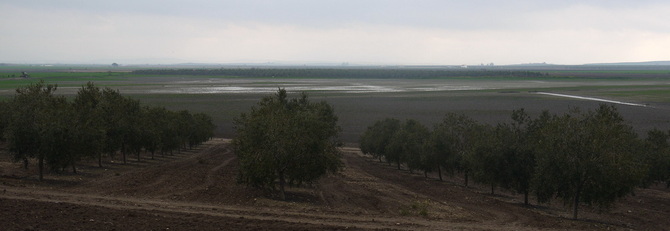 Hoya de la Verde Sal Taking theSE 708 west from La Lantejuela towards for El Rubio, after about 2.5km from the village a good track runs across the farmlands on your right – apparently part of the plans to encourage ‘eco-tourism’. After c700m you get a view across Laguna/Hoya de la Verde Sal (b) which, I suspect is more a ‘hoya’ than a ‘laguna’ since even in what seems a wet year it was dry.(According to one source a sendero passes to the west of the hoya to reach Laguna de Pedro Lopez). Look for Stone Curlew here and the habitat looks good for Black-bellied Sandgrouse (although rare in this general area). 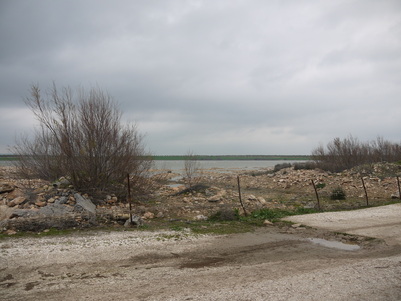 Laguna de Ballestera from (c) The track passing Verde Sal continues to give good views of Laguna Ballestera (c) which is also viewable from the SE 708 (although parking along the road is limited). Unlike the access to this track further along the SE 708 there are no restrictive notices coming from this direction (although if the water level in the laguna is high further progress along the track is impossible). Take care not to spook the birds which can be very close to the shore here. Ballestera often has several hundred Flamingos, but also check carefully for Lesser Flamingo which has occurred several times. Four Ruddy Shelduck were also present in the winter of 2012/2013. Many Ruff and other waders, Whiskered Tern, ducks (inc. Red-crested Pochard and White-headed), Black-necked Grebe and numerous Coots present. Red Kite are frequent in winter. Both Montagu’s Harrier and Lesser Kestrel are common in summer and Black-winged Kite are now resident here. 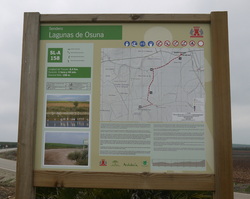 The track behind Laguna de Ballestera rejoins the SE 708 about 1km further west (e). There's a large sign here showing a walking route to Laguna Pedro de Lopez (f) which, if wet, holds those species already noted for more accessible lagunas. (This noticeboard is flanked by an old notice suggesting this is a ‘restricted military area'; obviously you can walk this route, but it's unclear whether you can drive along it). This should be more accessible from (c) assuming the water level is not too high. Note that walking to this laguna is not advised during the heat of the summer. Back on the SE 708 there's a T-junction just after you pass Laguna de Ballestera where, by going north, on the SE 705 you pass Laguna Consuegra (d). In wet springs the junction may overlook flooded fields which can have good numbers of Lapwing, Black-winged Stilt and Gull-billed Terns.The laguna itself, accessed by a rough track running along its eastern rim, holds many of the species noted under Ballestera (inc. vagrant Lesser Flamingo). Back on the now familiar SE 708 continue towards the A 351 and El Rubio. In spring 2011 there was a large distant flooded area to the north of the road which was packed with Flamingos and waders (inc. Greenshank, Green Sandpiper, Dunlins, etc). However, although probably always 'damp' this area is not always flooded. Roughly 10 km after leaving the La Lantejuela you reach the A 351 (Ecija-Osuna road) and with it the Hoya/Laguna de la Turquillas (g). Although often dry and when wet clogged with reeds, during passage it attracts dozens of Whiskered, and a few Black Terns (check for White-winged Black too), Squacco Heron, Purple Gallinule and White-headed Ducks. Marbled Duck sometimes appear here so scan carefully. (Note that parking here can be tricky). The warm tarmac road tempt Collared Pratincole. to rest perilously. Whiskered Tern, Purple Heron & Little Bittern breed. Evidently a sendero (footpath) skirts the edge of the laguna towards the Lagunas de Calderon (h). There are two Lagunas de Calderon – Chica and Grande. The tiny Laguna de Calderon Chica tends to be the wetter of the two and presumably has many of the same species as Turquillas. Immediately to the south is the larger neighbour Laguna de Calderon Grande. However, whilst it has a greater surface area than its near name sake, it’s much shallower and more often deserves to be called a ‘hoya’. Once more pulling off the road here is tricky, but alt least there’s a track you could pull onto at its southern end. (Promised touristic developments here may improve matters). Anywhere along the A 351 has the potential to turn up Great or Little Bustards, but finding somewhere safe to pull over is always problematical (although I’m probably more cautious than some). The best areas look to be to the west left 5-6 km north of the junction of the SE 708/A 351.
To the east, set amongst distant hills tantalisingly shimmering in the heat 1-2 km from the road lies the Laguna de Ruiz Sanchez (j); once the largest lake (356 hectares) in the complex and the second largest in Andalucia – only Fuente de Piedra is larger. Previously home to Marbled, Ferruginous & White-headed Duck and Crested Coot, a restoration project (started in 2006) aims to restore these species here. From the road Flamingos can be identified, but the numerous small waders and ducks using the laguna are too distant to be identified. However, a track c3 km from the junction of the A 351 (near the 14km marker) runs through olive groves towards the laguna and then loops round to run along parallel to its western shore. This route is used by cyclists and may be accessible by car. (There's also a still rougher less likely looking farm track at 11 km marker - see photo - which may allow approach on foot). Let me know if you explore either. The local community is now growing aware of the potential of eco-tourism. In 2010 the complex was awarded a grant of 600,000€ to develop a visitors’ centre and encourage birdwatching. In April 2011 a small bird fair was held here, but the current financial crisis in Spain may have brought developments to an abrupt halt. However, the area continues to be threatened by agricultural development so the presence of visiting birders may may do some good. See- http://lantejuelaturismorural.blogspot.com/). Note -the only laguna in the complex I can’t find is the Laguna de Cantera Romana – let me know if you find it! Thursday 14th February Apart from avoiding Ryanair's 'service' to Jerez, the great thing about taking Easyjet's early morning flight from Gatwick to Seville with Easyjet is that it got us to Seville Airport around mid-day. This gave us you plenty of time to detour towards Osuna/Lantejuela for those few birds harder or impossible to get in Cadiz Province;Black-bellied Sandgrouse and both bustards. Previously, I'd headed east from the airport on the A4 Cordoba road and turned south (c28 km west of Carmona) on minor roads to Fuentes de Andalucia and then on to La Lantejuela. In late spring/summer I've had several Rollers along these back roads, but without this inducement I decided to try a new, possibly faster route made possible by a short section of the new southern bypass that's actually been finished. (When it's all done – 2014? 2015? Never? -this will be a great route down to Cadiz, to the Coto and over toPortugal). So we turned off south from the A4 six km east of the airport to get onto A92 Granada motorway (c8 km) which passes close to Osuna. As planned we came off at Exit 80, but instead of going into Osune we as we took the minor road beside the Bar Restaurante Las Vegas (good Menu del Dia for 9€). Skirting a small industrial estate to the left we soon started running parallel to the Granada – Seville railway. The AVE line here is still unfinished, but all of the bridges built in expectation of its completion give unrivalled views of bustard habitat! We soon reached the first bridge just over 4 km from the venta. Here the road swings left up an embankment to cross the railway line at an angle (a). Unfortunately, we found nothing here (although I've hadGreat Bustard here in the past). However, later in the day when heading for home there were at least seven Little Bustards semi-concealed in the grass on the far side of the railway tracks. For the most part you could only see their heads so I had to look carefully …. and listen too as the males were calling. I checked the far side of the bridge both times without luck although I've had Little Bustard here in the past (over towards Los Patios de Trujillo). The next vantage point is the second bridge (b) which is 2.5 km further on. The minor road goes under this bridge which serves farm traffic, so to access it we pulled off onto a small track on the left immediately before passing under the bridge. In 2011 the fields to the left as you climb the embankment towards the bridge had several pairs of displaying Little Bustard, but today we had nothing. On the far side looking NE we were able to get a good view over two large fields – separated by a low bank topped with weeds – and, naturally, the Great Bustardswere in the furthest field! At first I could only see a dozen or so birds, but careful checking revealed 39 birds. Despite being such big birds they could be surprisingly hard to see and at times only 2 or 3 were in plain sight (see photo below). Often by using the minimal cover, dips in the surface or just by sitting down they could virtually disappear. The only sign being their heads and necks as they 'periscoped' above the grass to have a good look round! A couple of the huge males were quite 'fluffed up' but there was no serious effort to display to the females. Why can't it always be this easy? This track continues across the fields to meet up with the track (d) that crosses the third bridge, but I'd only try it in a 4x4. So we then headed off to the fourth and final bridge. Unlike the first three this is off the right along a good metalled road that provides a good route to La Lantejuela (signs for the now closed Venta la Romera mark this junction). We crossed the bridge, pulled off the road and walked back to scan the fields, but were again disappointed. Iberian Grey Shrikes, more Red Kites plus a few Black Kites, appeared along the road, but the hoped for Black-winged Kite eluded us. After 2-3 km some ruined farm buildings came into view on the left, but we pulled off on the right where a very rough track heads off into open farmland (f ). It's easy to miss so look out for two small white buildings (an old electricity substation I think) in the field the right. Don't worry if you overshoot as you can soon pull off on the left off (look for the sign Vereda del Alamillo) and walk back.
Our target here was Black-bellied Sandgrousea small flock of which had been seen here before Christmas – a long shot as they're very scarce in the area. So off we trotted down the poor track across open farmland in the hope of a small miracle! The ploughed field to the right didn't look ideal, but the field to left- large open, weedy and stony did! It's needle-in-haystack experience and I wasn't optimistic, but about 100m along the track I caught sight of four tubby birds zooming towards me. Even before I clapped the bins on them I knew that they were sandgrouse. They shot over above the track, dropped, flew low to the ground and 'went to earth' on the far side of the field. The instant they grounded they blended in perfectly and disappeared. Good flight views – pale sandy above and a bold black tummy below. Result! Not a bad half day in the field! |
About me ...Hi I'm John Cantelo. I've been birding seriously since the 1960s when I met up with some like minded folks (all of us are still birding!) at Taunton's School in Southampton. I have lived in Kent , where I taught History and Sociology, since the late 1970s. In that time I've served on the committees of both my local RSPB group and the county ornithological society (KOS). I have also worked as a part-time field teacher for the RSPB at Dungeness. Having retired I now spend as much time as possible in Alcala de los Gazules in SW Spain. When I'm not birding I edit books for the Crossbill Guides series. CategoriesArchives
May 2023
|
| Birding Cadiz Province |
|
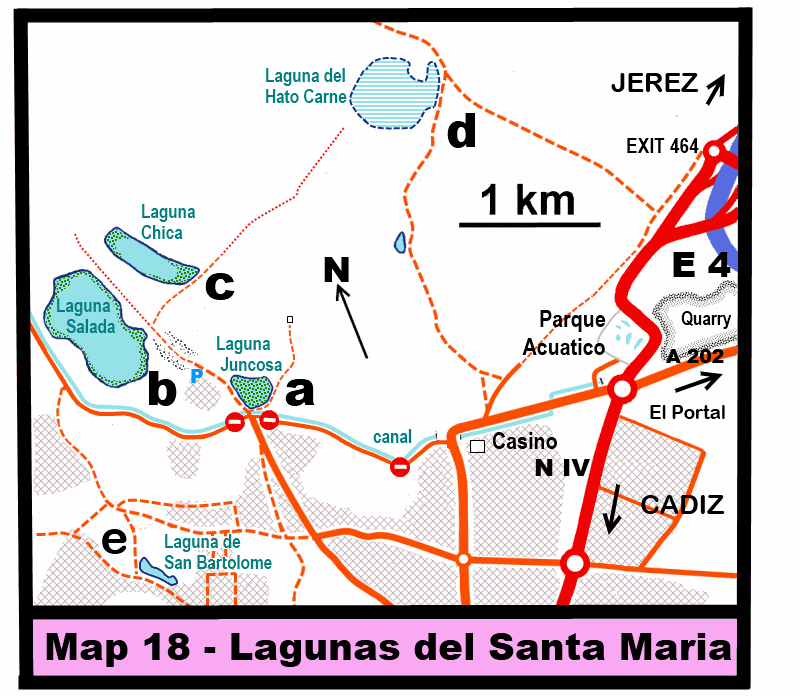
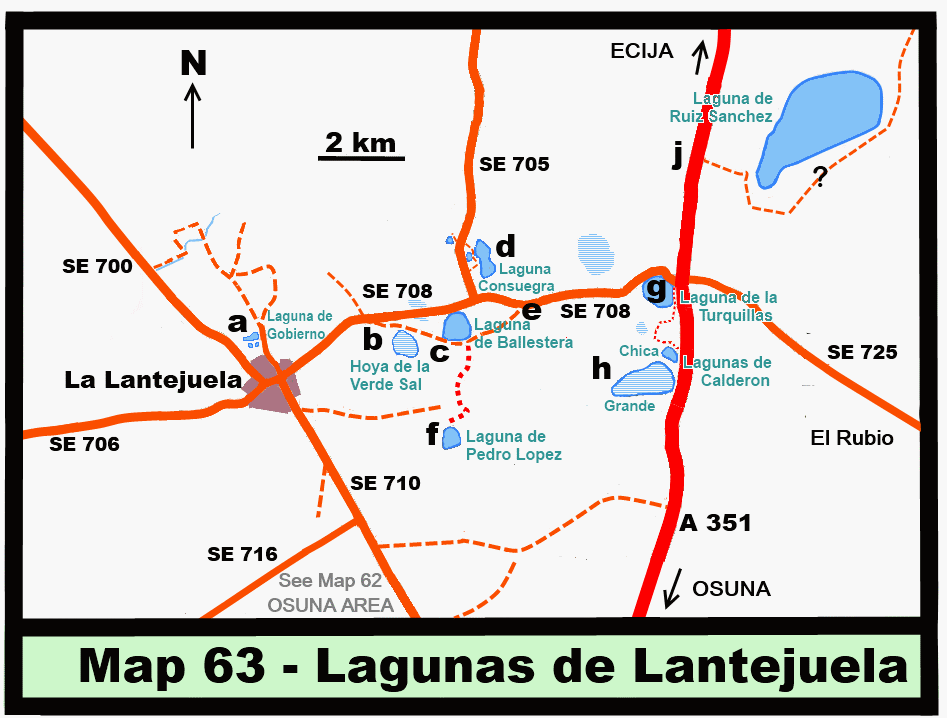

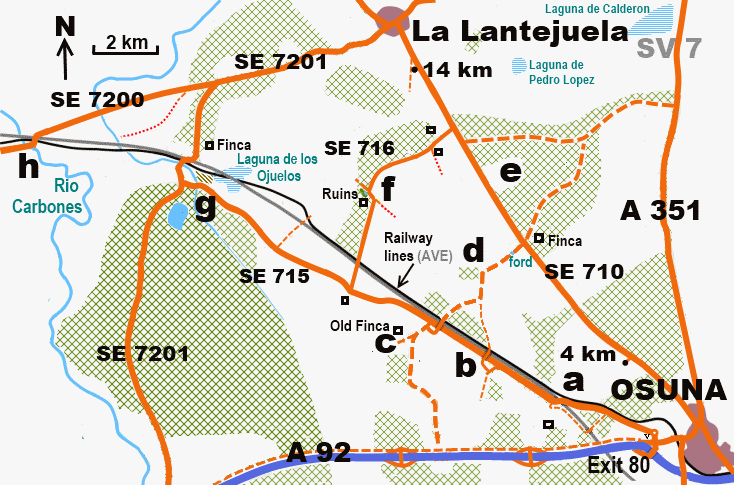
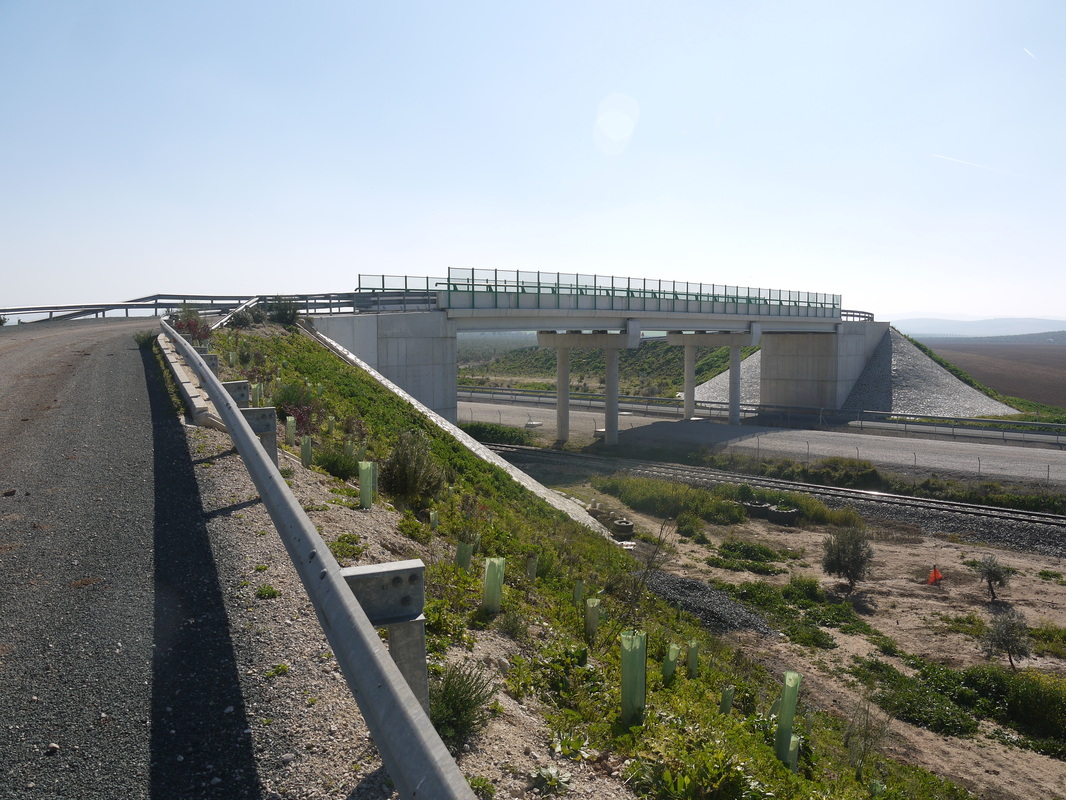
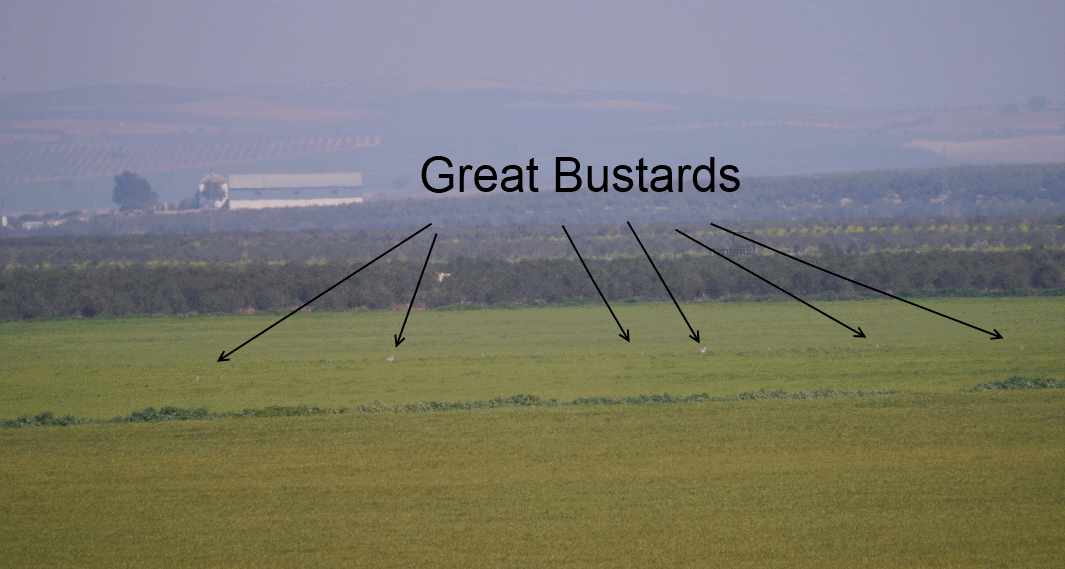
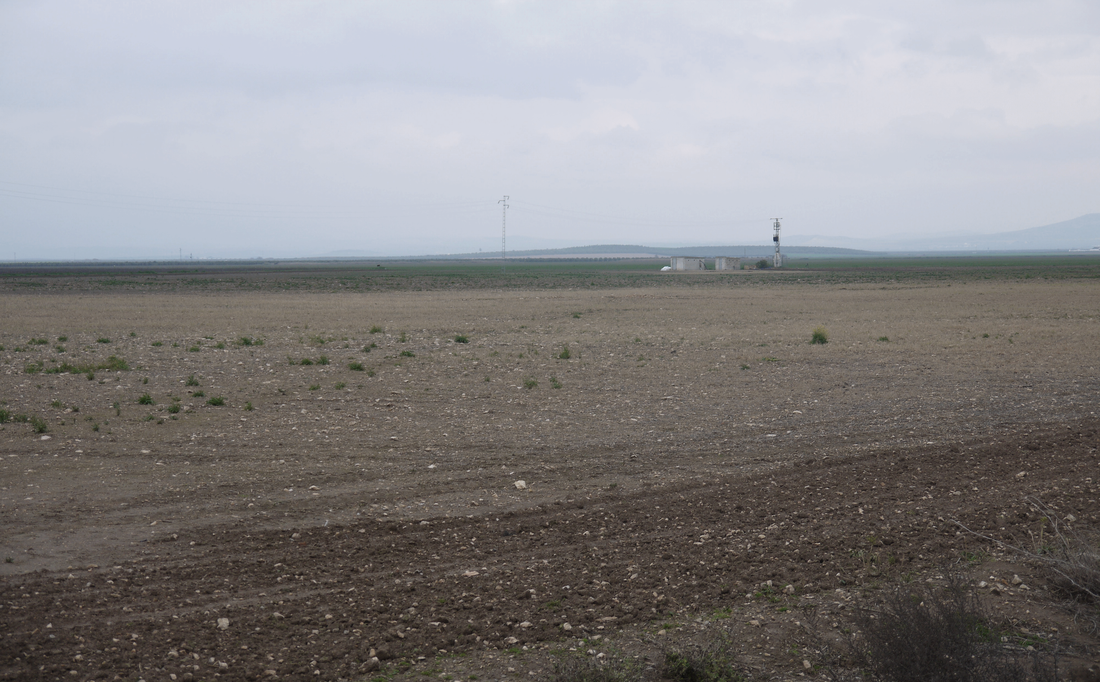
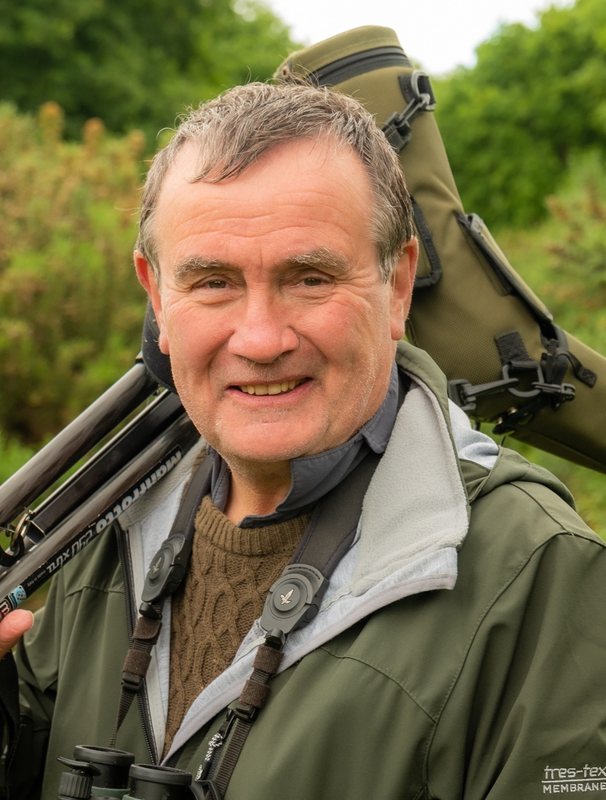
 RSS Feed
RSS Feed
